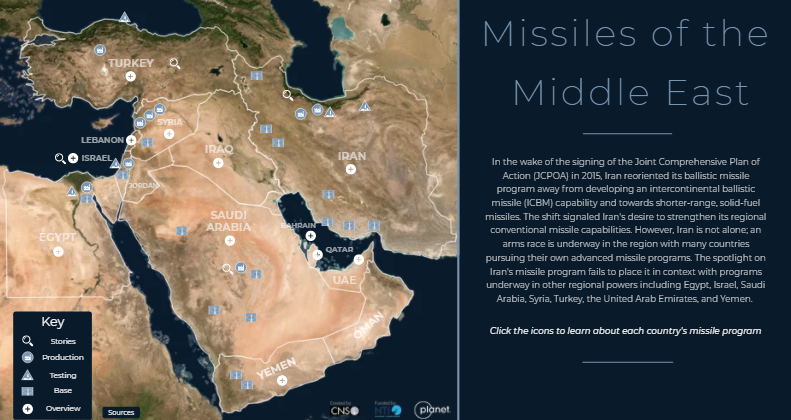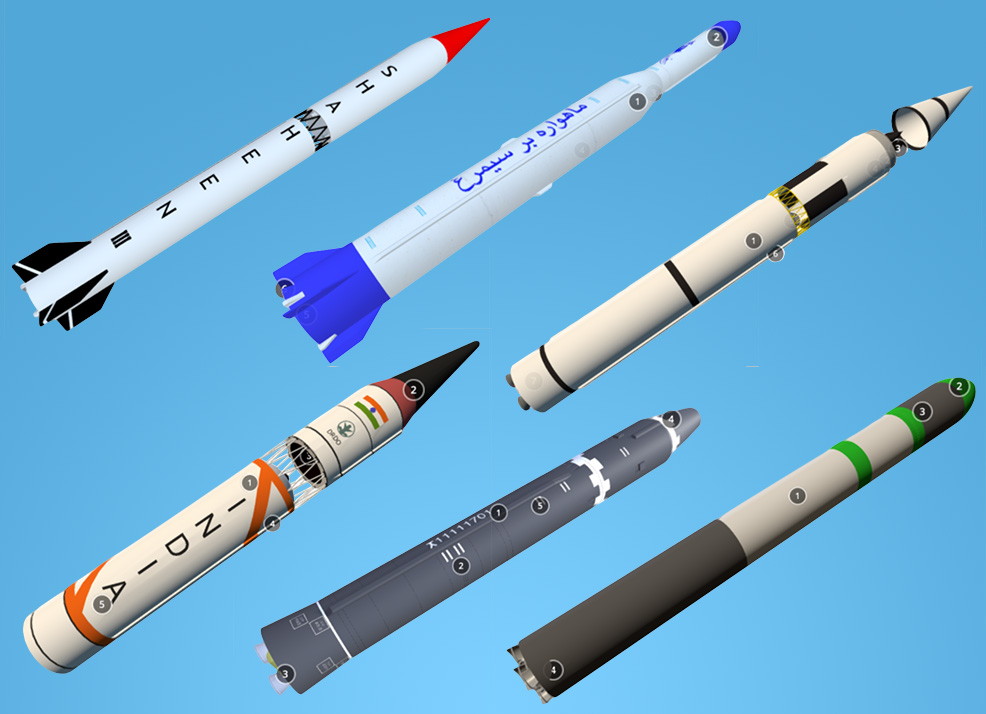
Victor Mizin
Senior Research Associate, The James Martin Center for Nonproliferation Studies
Russia considered the ABM Treaty as the cornerstone of strategic stability and one of the most important strategic documents between Moscow and Washington. U.S. withdrawal from the Treaty and the Bush administration's focus on the development of a nationwide missile defense system is seen by some Russian political and military elites as a resuscitation of the Reagan-era Strategic Defense Initiative. For several years, Russia tried to launch a diplomatic and public relations campaign in support of the Treaty and showed rigidity against any modification. Now that the ABM Treaty has been abandoned, however, there are those in Russia who favor entering into joint ventures in R&D and deployments with U.S. missile defense designers. The success of cooperation on missile defense will depend on the overall status of bilateral rapprochement.
The Anti-Ballistic Missile (ABM) Treaty was considered by former Soviet leaders and their Russian successors as the "cornerstone of strategic stability" and one of the major strategic documents in relations between Moscow and Washington. This treaty protected the central paradigm behind nuclear deterrence for Russia, as it assured unavoidable punishment for a nuclear first strike by rendering the opponent vulnerable to unacceptable damage from a retaliatory response. [1] Hence, Moscow was very much alarmed by the ABM Treaty-busting Strategic Defense Initiative (SDI)–the "Star Wars" plan formulated by the Reagan administration in 1983–perceiving it as a camouflaged attempt to achieve strategic supremacy for the United States. [2] Subsequently, Moscow considered the George Bush, Sr. administration's refocusing of SDI to the so-called Global Protection against Limited Strikes (GPALS) program as a major policy success. [3] It was also generally content with the Clinton administration's stance of designing a system to only protect against accidental or unauthorized intercontinental ballistic missile (ICBM) and submarine-launched ballistic missile (SLBM) launches, as well against the threat of theater-based missiles. [4]
But now the new Bush administration's focus on the development of a nationwide missile defense (MD) system, which has become somewhat of an article of faith for the Bush team, is seen by the Russian political and military elites as a resuscitation of the primary strategic threat of SDI in a new politico-strategic environment. This attitude has been stimulated by Russian acknowledgement of the following factors:
Consequently, Russia's bilateral arms control relations over the past U.S. presidencies and during the first few years of the current Bush administration were centered on efforts to preserve the linkage between offensive and defensive potentials, bolstering the ABM Treaty as a sine qua non precondition for any drastic cuts of strategic nuclear forces, which Russia stated should be legally binding, verifiable, and "irreversible" against any sudden breakout. According to these criteria, Moscow has again failed in all aspects, giving up on one position after another. First, the linkage between offensive and defensive potentials was dropped, followed by the ratification of the START II Treaty in absence of any clear commitment to comply with the ABM Treaty, and capped off by the almost muffled reaction to the scrapping of the ABM Treaty itself.[8] Russia never even evoked its previously intimated threats of walking out of some key arms control or nonproliferation treaties, other than the already doomed START II, or dramatically increasing its own military buildup. Finally, the Moscow Treaty on strategic offensive reductions was signed with the most loosely formulated commitments in the history of bilateral arms control.[9] Some experts considered that this signified that the traditional bilateral arms control process between the two nations was "dead." [10]
For several years, Russia tried to launch a broad-scale diplomatic and public relations campaign in support of the ABM Treaty and attempted to undermine U.S. MD deployments. Notably, Russia has co-sponsored with China the Moscow-masterminded UN General Assembly resolution calling for "full and strict" compliance with the ABM Treaty, as it counted on the support of the majority of UN members in its "tug-of-war" with the United States. [11] Concerned that MD developments would lead to the placement of weapons in outer space, Russia co-sponsored a Chinese initiative against its weaponization, listing "possible elements for a future international legal arrangement on the prevention of the deployment of weapons in outer space, the threat or use of force against outer space objects." [12] Russia brought forward several initiatives over the last few years focusing on positive alternatives to the American agenda, for example, the so-called "Putin Plan" of arms control, [13] the idea of convoking an International Space Conference in Moscow, and the concept of the Global Control System for the Nonproliferation of Missiles and Missile Technologies. [14] At the same time, Russia showed rigidity against any modification of the ABM Treaty, an approach that many experts considered a mistake, since that left the United States with no other option but to back out of the agreement. [15] Had Moscow been more open to modification of the treaty, it might have left some framework in place rather than the current state of no treaty at all.
The Russian attitude toward MD can be divided into three major groups:
This last direction of thinking is based on the premise that the international environment has drastically changed, and the United States and Russia are no longer visceral ideological enemies as they were during the Cold War. Moreover, it posits that Moscow has vested interests in developing strong relations with the United States, both for geopolitical reasons, as a brother-in-arms in the fight against terrorism, and economic ones, since U.S. support is still vital for the success of Russian domestic reform and adherence to the international financial fora. [19] At the same time, in contrast to concerns about MD's strategic consequences in the case of an unexpected souring of bilateral relations, current U.S. MD configuration does not yet threaten Russian retaliatory capabilities. Defense Minister Sergey Ivanov has deemed the U.S. MD program as almost "a myth," easily penetrable by Russian missiles, especially if its potential is only slightly upgraded.[20] No drastic "asymmetrical responses" to MD–the inevitability of which Moscow's military had been propagating at the end of 1990s–has ever materialized. The only real consequence of the American determination to spur MD deployment is Moscow's decision to extend the combat alert status of its multi-warhead MIRVed ICBMs, which was only logical after Russia's walkout of START II limitations in the wake of the U.S. shredding of ABM Treaty in 2002. [21]
Thus, there will likely be no breakthrough in the stalemate under the current U.S. administration. Bilateral discussions will be at best confined to the issues of transparency and predictability. Russian involvement, if any, in MD progress will be restricted to two main projects, Russian-American Observation Satellite (RAMOS) program and the Joint Data Exchange Center, both of which are still currently being held in limbo. [22]
The root causes of such Russian final "aloofness" are not only in the somber facts of Moscow's inability to spend approximately $60 billion or more on a defense project with such an uncertain outcome, but also a calmly calculated attempt to win some political advantage–if not from direct participation in MD research (to which Putin now expresses cautious readiness [23]), then in a general amelioration of U.S.-Russian relations up to the level of almost a partnership, which would undoubtedly bring geopolitical, if not economic, rewards for Moscow. Meanwhile, Moscow is attempting to scrape together scarce resources to quietly develop its own version of MD, the so-called "new system of aerospace defense" construction based on its aging Moscow ABM site, and non-strategic MD systems being created as follow-ons to the Russian C-300 air defense complexes.[24]
The cash-strapped Russian missile/space R&D facilities have considerable expertise and technologies in the missile defense area (dating back to the now-cancelled Soviet programs) to offer to the U.S. Missile Defense program. Major U.S. aerospace companies, like Boeing and Lockheed Martin, have already reportedly entered into preliminary exploratory discussions with their Russian counterparts on prospects for several joint design and development projects for MD. These potential deals, which might reach out far beyond a Europe-oriented, non-strategic defense as proposed by Putin in July 2000, are welcomed in principle by the limping Russian defense industry. These proposals would demand breakthrough-type political decisions in Moscow and a less skeptical attitude from the Russians toward future strategic missile defenses. [25] The success of cooperation on MD will predictably depend on the overall status of bilateral rapprochement. The current "semi-ally/semi-rival" status between Russia and the United States has prompted some key Russian experts to doubt the possibility of any meaningful cooperation on MD, while Moscow and Washington remain within the confines of mutual nuclear deterrence. [26] The United States, nevertheless, should not underestimate the potential amount of work necessary to shift Moscow out of the comforts of its Cold War-based arms control stance. [27] For the moment, Russian diplomacy, ostensibly under the prodding of its conservatively anti-American military, is still hoping to conclude a broad "political" agreement with the United States on strategic stability and missile defense issues to compensate for the scrapping of the ABM Treaty. [28]
[1] U.S. Department of State, "ABM Treaty Fact Sheet"; Anti-Ballistic Missile Treaty; and also the materials posted at one of the best Russian websites on arms control/nonproliferation matters (in Russian): Center for Arms Control, Energy, and Environmental Studies, www.armscontrol.ru.
[2] See arguably the best U.S. website on SDI: Federation of American Scientists, Special Weapons Project, Special Weapons Monitor.
[3] On this limited system concept "killed" by the Clinton administration, see U.S. Department of Defense, History of the Missile Defense Organization, "Transitioning to the Post-Cold War Era"; GlobalSecurity.org, Space Resources, "The Strategic Defense Initiative: 'Star Wars' Becoming a Reality."
[4] On Clinton's team concept for the radically "shrunk" missile defense architecture, see Department of Defense, "Final Programmatic Environmental Impact Statement (FPEIS) for the Ballistic Missile Defense (BMD) Program," November 21, 1994.
[5] See, for example, the latest editions of the Russian military doctrine or its National Security Concept.
[6] See, for example, the articles by well-known Russian military expert and former head of the SRF think-tank Lieutenant General (Ret.) Lev Volkov, the self-proclaimed "hawk" and former Russian Minister of Atomic Energy Professor Viktor Mikhailov, or even by the leading Russian civilian expert on strategic issues, Duma Deputy Alexey Arbatov.
[7] See the articles by one of the prominent Russian experts on ABM Treaty and NMD-related problems Major General (Reserve) Viktor Koltunov (in Russian): www.armscontrol.ru.
[8] See https://odsddsny.un.org.
[9] On Moscow SORT Treaty, see White House, "Text of Strategic Offensive Reductions Treaty," May 24, 2002; Victor Mizin, "The Treaty of Moscow," Center for Nonproliferation Studies, Monterey Institute, July 2002; and publication of the Center for Arms Control, Energy and Environmental Studies of the Russian Moscow Institute of Physics and Technology.
[10] See a thought-provoking article by Russian strategic expert Pavel Podvig, "The End of Strategic Arms Control?," Center for Arms Control Studies, December 2001.
[11] On the rationale behind this Russian initiative, see Permanent Mission of the Russian Federation to the UN, Statement by Sergei A. Ordzhonikidze on the issue of the ABM Treaty, October 23, 2001.
[12] See the text and comments by the Russian officials: Russia-China CD Working Paper on New Space Treaty, June 27, Russian Statement, Acronym Institute, June 2002; "Russia and China Introduce Draft Treaty on Space Weapons," The Acronym Institute, September 2002.
[13] President Putin Statement on Nuclear Reductions, Acronym Institute, November 13, 2000; "Nyet More Nukes?," CBS.com, November 13, 2000.
[14] International Global Control System Experts Meeting, March 16, 2000.
[15] "ABM Treaty Modification: Should Russia Agree," Strategic Arms Reductions, updated July 17, 2000, https://nvo.ng.ru.
[16] For telling examples of this approach, see publications by the leading defense industry and military dignitaries of the Soviet times (in Russian): https://nvo.ng.ru.
[17] For example, one of the most interesting Russian political observer Andrey Piontkovsky (in Russian), www.russ.ru or the leading Russian "Americanist" Sergey Rogov (in Russian), https://nvo.ng.ru.
[18] See Putin's interview with the Financial Times, December 13, 2001, with a rather weighted assessment of the strategic ramifications of U.S. withdrawal from ABM Treaty: https://news.ft.com.
[19] www.ng.ru.
[20] https://nvo.ng.ru.
[21] https://nvo.ng.ru
[22] On RAMOS, see Leonard David, "U.S.-Russia Working on Satellite Missile Watching System," Space.com, October 24, 2001; George Gedda, "U.S.-Russia Defense Cooperation Seen," Center for Defense Information, Russia Weekly, June 20, 2002; on JDEC: Committee on International Security Studies, "Global Security Implications of Joint Missile Surveillance," July 2001.
[23] www.izv.info.
[24] Sergey Ivanov, Minister of Defense of the Russian Federation, "Russia will develop its own ABM system on the principle of common sense, technological possibilities and the situation of the economy," Vedomosti (In Russian), January 16, 2003, p. A2.
[25] David Ruppe, "Defense contractor, Russian institute pursue missile defense deal," Global Security Newswire, August 27, 2002.
[26] Kerry Boyd, "U.S.-Russia: Joint Missile Defense Program Unlikely, Russian Official Says," Global Security Newswire, July 2, 2002.
[27] National Institute for Public Policy, "Evolving Russian Perspectives on Missile Defense: The Emerging Accommodation," March 2002, p. 69.
[28] "US Officials unaware of Russian missile proposals," SpaceDaily, January 9, 2003.
Sign up for our newsletter to get the latest on nuclear and biological threats.
One might be forgiven for solely focusing on Iran’s missiles. And yet, Iran’s missile program does not exist in a vacuum.
Interact with 3D models of ballistic and cruise missiles from China, India, Iran, North Korea, Pakistan, and Russia. Produced by the James Martin Center for Nonproliferation (CNS).
View interactive visuals, analysis, and data on ballistic missile and SLV launches by North Korea, Iran, India, and Pakistan.

